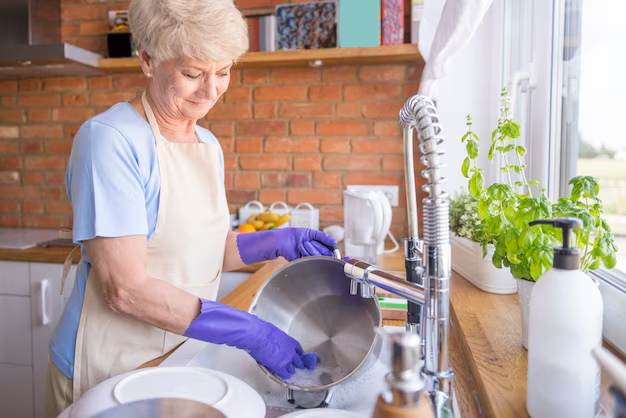Easily Fix Water Accumulation: A Guide to Cleaning Your Refrigerator Drain Pan
Does your refrigerator have a mysterious puddle of water at its base? It's likely due to the water in the drain pan overflowing. Ignoring this seemingly minor issue can lead to bigger problems, like unpleasant odors or even mold growth. Fear not—removing water from a refrigerator's drain pan is easier than you might think. In this guide, we'll explore step-by-step instructions and related maintenance tips to ensure your fridge runs smoothly.
Why Does Water Accumulate in the Drain Pan?
Before diving into the how-to, it's crucial to understand why water accumulates in the drain pan. Most refrigerators have a drainage system to collect and evaporate water that results from condensation and defrost cycles. Ideally, this water should evaporate on its own. However, if the pan becomes overloaded or there's an issue with the drainage system, the water won't evaporate as expected, leading to overflow.
Common Reasons for Overflow
- Clogged Drain Tube: Dust or food particles can block the drain tube, impeding water flow.
- Excessive Humidity: High humidity levels, usually during summer, can increase condensation beyond the drain pan's capacity.
- Faulty Evaporator Fan: If the fan isn't working correctly, it may not disperse the water efficiently, leading to overflow.
🚀 Step-by-Step Guide to Remove Water from the Drain Pan
Tools and Materials You'll Need
- Towel or sponge
- Screwdriver
- Cleaning brush
- Mild soap or white vinegar
- Gloves (optional)
🧩 Step 1: Locate the Drain Pan
- Unplug Your Refrigerator: Safety first! Ensure your fridge is unplugged from the power source before beginning any maintenance tasks.
- Find the Drain Pan: Typically, the drain pan is located at the bottom of the refrigerator. You might need to remove the kick plate (a cover located at the bottom front) to access it.
🧩 Step 2: Remove the Water
- Soak Up Excess Water: Use a towel or sponge to soak up as much water as possible from the drain pan.
- Dry the Pan Thoroughly: Ensure the pan is entirely dry to prevent residual moisture from sitting there afterwards.
🧩 Step 3: Clean the Drain Pan
- Use a Mild Cleanser: Mix a solution of mild soap or white vinegar with warm water.
- Scrub the Pan: Use a cleaning brush or non-abrasive sponge to scrub the pan thoroughly, removing any dirt or mildew.
- Dry After Cleaning: Wipe down the pan with a clean towel to remove any moisture left.
Troubleshooting: What If the Drain Pan Fills Quickly Again?
If you notice the pan fills quickly again, it may indicate another issue. In such cases, further inspection of the drainage system and other parts might be necessary.
✨ Step 4: Check the Drainage System
- Examine the Drain Tube: Check for any blockages or kinks that could prevent water from flowing freely.
- Clear Any Blockages: Use a flexible cleaning brush to dislodge any debris.
✨ Step 5: Evaluate Other Components
- Evaporator Fan Functionality: If the fan is not operating correctly, consider consulting a professional for repair or replacement.
- Refrigerator Level: Ensure the fridge is level. An uneven refrigerator can cause improper drainage.
🛠 Related Maintenance Tips for Longevity
To prevent future issues, regular maintenance is key. Here are additional tips to keep your refrigerator in top condition:
🌿 Regular Maintenance Tips
- Clean the Coils: Dusty coils can overheat, so vacuum or brush them semiannually.
- Inspect Door Seals: Ensure the seals are tight to maintain temperature efficiency.
- Defrost Regularly: For models without auto-defrost, manually defrost to reduce frost build-up.
🔍 Quick Tips
- 🗓 Schedule Regular Checks: Inspect the components every 3-6 months to catch problems early.
- 🔔 Stay Alert: Pay attention to puddles or performance changes—early detection is vital.
🌟 Key Takeaways
- 📍 Identify the Issue: Knowing why the water is collecting is as vital as fixing it.
- 🔧 Regular Maintenance: Regular check-ups on drainage and cleaning ensure longevity.
- 🔍 Monitor Potential Problems: Keeping an eye on performance can prevent larger problems.
💡 Summary of Steps to Clear Your Fridge Drain Pan
- Safety First: Always unplug your appliance before maintenance.
- Locate and Dry: Find the drain pan and remove excess water.
- Clean Thoroughly: Use a gentle cleanser to remove any deposits or mildew.
- Regular Checks: Examine drainage and other components for typical wear and tear.
By following these steps and maintenance tips, you can ensure your refrigerator runs efficiently and effectively, free from the hassle of water overflow. Whether you're a seasoned DIY enthusiast or a kitchen novice, these straightforward actions can empower you to maintain your appliance with confidence.
